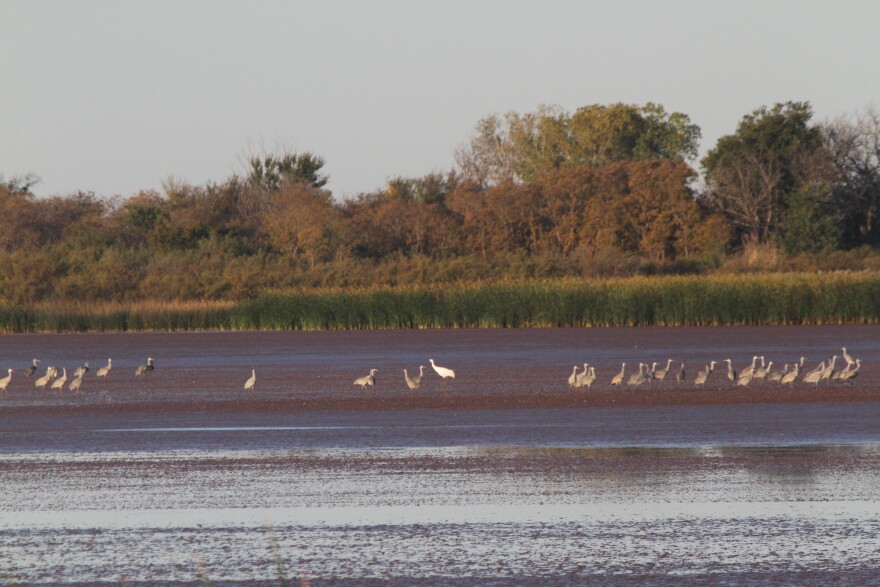Thousands of sandhill and whooping cranes are stopping over at the Salt Plains National Wildlife Refuge in Alfalfa County. The species rest and refuel among the salt flats and wetlands during their autumn migration.
The refuge is hosting two guided walks to welcome the birds’ arrival on November 29 and December 7, a press release from the U.S. Fish and Wildlife Service states. Staff members plan to help visitors identify species with binoculars and a spotting scope. The event is free and starts at the visitor center in Jet.
Whooping cranes are among the rarest North American birds, according to the National Audubon Society, with an estimated population of just a few hundred. The crane has been listed under the Endangered Species Act for more than 50 years.

Whooping cranes make a flight of about 2,500 miles from Canada to wintering grounds in coastal Texas, which can span nearly two months. The waterfowl, which are white with red skin on their heads, can reach five feet with a seven-foot wingspan.
Sandhill cranes number in the hundreds of thousands, Fish and Wildlife estimates, and are best seen at Eagle Roost Trail, Cottonwood Point, Jet Recreation Trail and Hoot Owl Loop in the refuge.
The species is gray, often with brown staining, and stands at about four feet with a six-foot wingspan.
Oklahomans who want to help track the cranes’ numbers can report sightings to the state Department of Wildlife Conservation’s observation page.
StateImpact Oklahoma is a partnership of Oklahoma’s public radio stations which relies on contributions from readers and listeners to fulfill its mission of public service to Oklahoma and beyond. Donate online.









